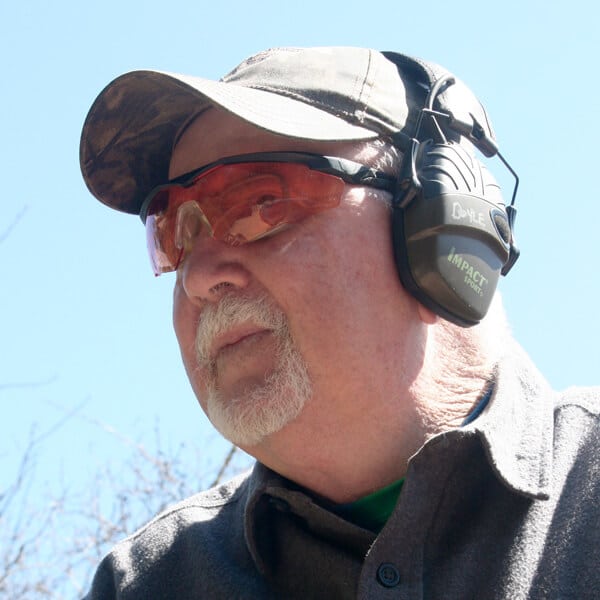Gunfight in the Dark: Would You Survive?
April 20th, 2023
6 minute read
It should come as no surprise that most violent crime occurs in sub-optimal light conditions. For centuries, criminals have been using the veil of darkness to conceal their illicit activities, and this trend can be supported by any number of definitive sources. Burglaries, home invasions, armed robberies, muggings and sexual assaults all seem to spike in the evening hours.
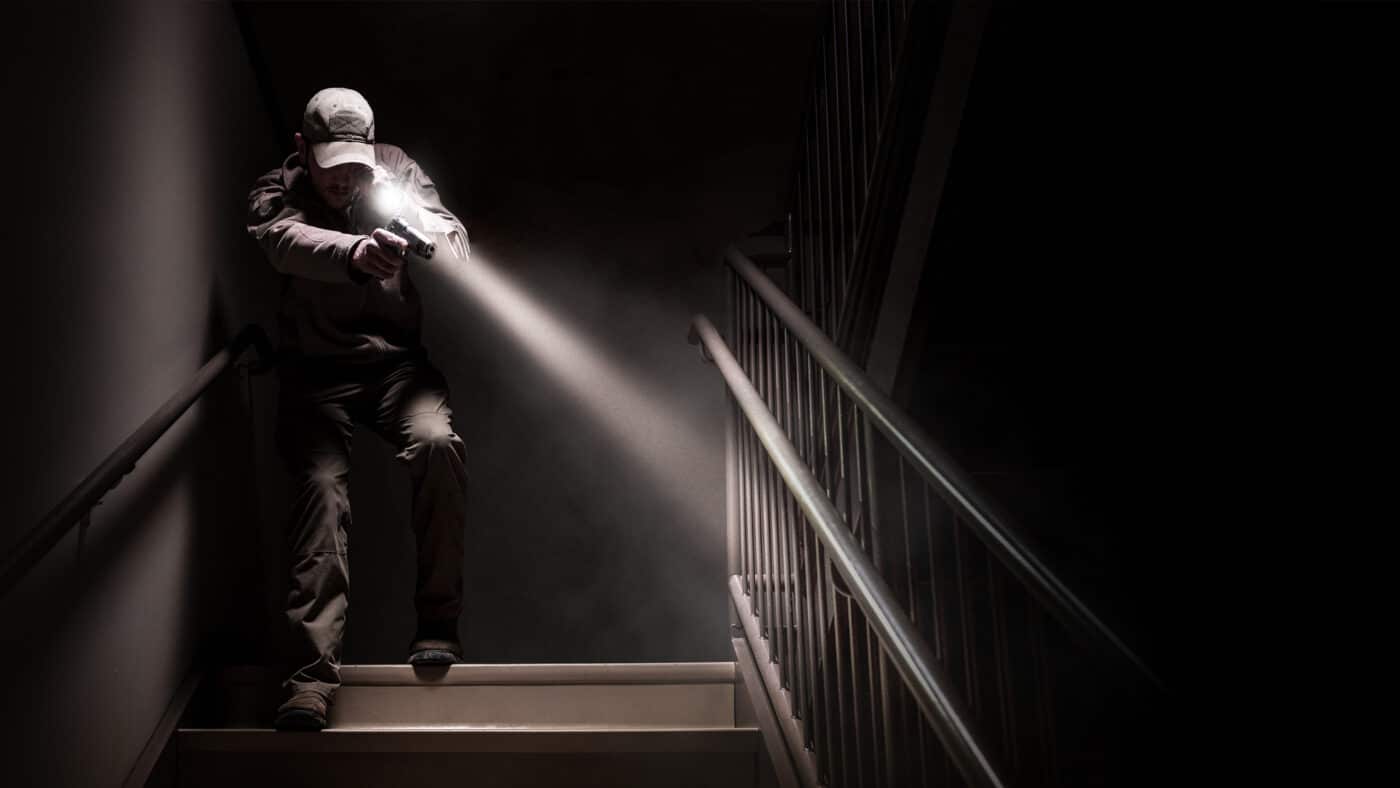
To be truly prepared, our training should address the most likely scenarios we will face. While it is valid that danger can visit anytime or any place, violent assaults often fall into a pattern. The danger unfolds very fast, the distance between you and your assailant is short, and light conditions are likely to be poor. Clearly, darkness handicaps our ability to spot potential threats sooner and make a sound assessment of the level of danger.
One way of tipping the odds back in your favor is to carry a small flashlight on your person and train to how to use it. It’s essential to get familiar with some techniques for working it in concert with your handgun. I feel that if you carry a gun, you also need to have a light with you regardless of the time of day. Real-world data suggests you may never have a need to use that light as a shooting aid, but it can fill any number of other critical roles.
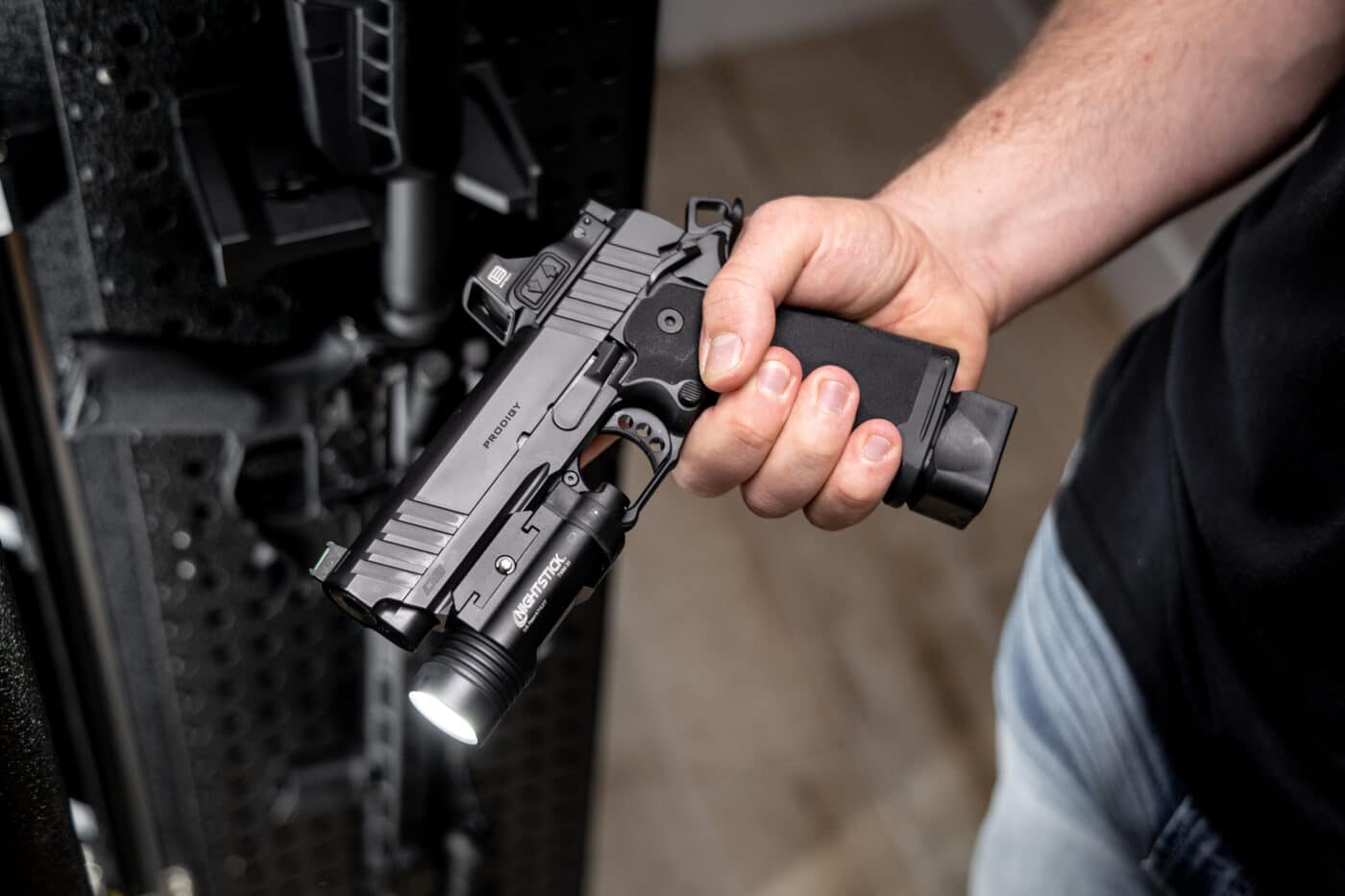
Over the years, I have tried 10 or so flashlight-assisted shooting techniques, some good and others not so good. Ultimately, I have distilled that down to three or four that might work under extreme stress. A small flashlight holds any number of advantages. However, the most important is that it helps you to sort out the good guys from the bad.
Technology Marches On
In the not-so-distant past, the tools utilized for low-light operations were not as refined as what we have available today. Night sights were considered exotic and were rarely encountered. I considered myself lucky to have been issued a rechargeable Streamlight SL20, which was great for uniformed patrol officers, but far too bulky for plainclothes applications. Small flashlights existed, but the light output was insufficient for defensive applications. That all changed in the 1980s when an upstart company called Laser Products introduced the Surefire 6P flashlight. The 6P projected sufficient light for personal defense applications, and best of all, it could be conveniently carried at all times when wearing casual clothing.
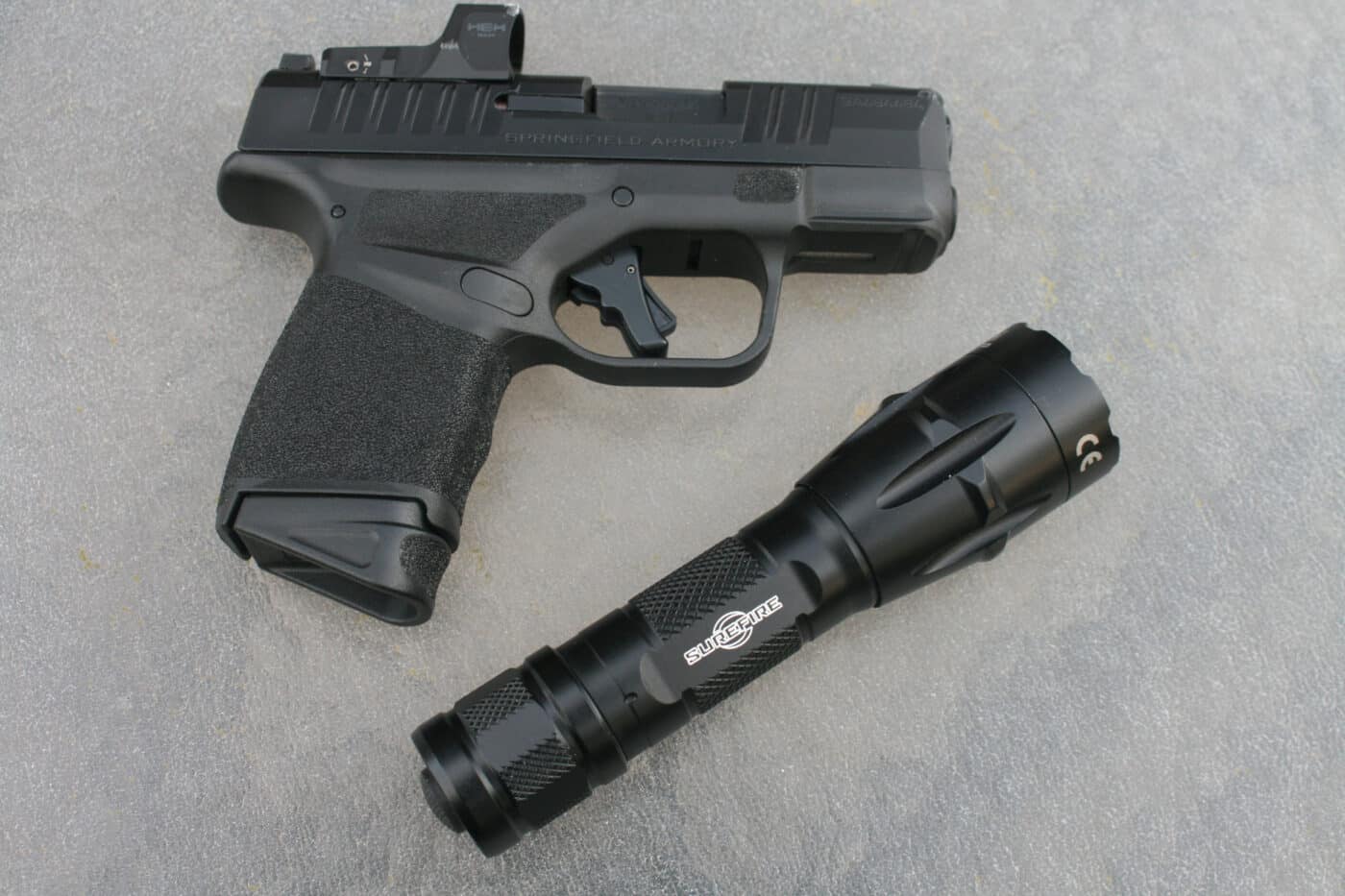
The Surefire 6P was indeed revolutionary, and today we can choose from a wide range of small tactical flashlights with far greater capabilities. Advancements in light-emitting diodes (LEDs) and battery technology now eclipse the potential of the large D-cell diameter lights that dominated the scene for many years.
Other advancements include weapon-mounted lights and laser aimers. For the uniformed law enforcement officer or home defense, weapon-mounted lights have much to offer. For those applications, the pistol size with an attached illuminator isn’t much of an issue. For discreet carry on smaller pistols used for personal defense, that extra bulk may be problematic. The bottom line is that while weapon-mounted lights are a great tool, handheld lights will always be part of the big picture.
Are We Doing It All Wrong?
Techniques for coordinating a handheld flashlight with a pistol fall into one of two categories. The first I would describe as “hands apart” where the handgun and light work independently of one another. This affords the user the ability to direct the gun and light to different locations.
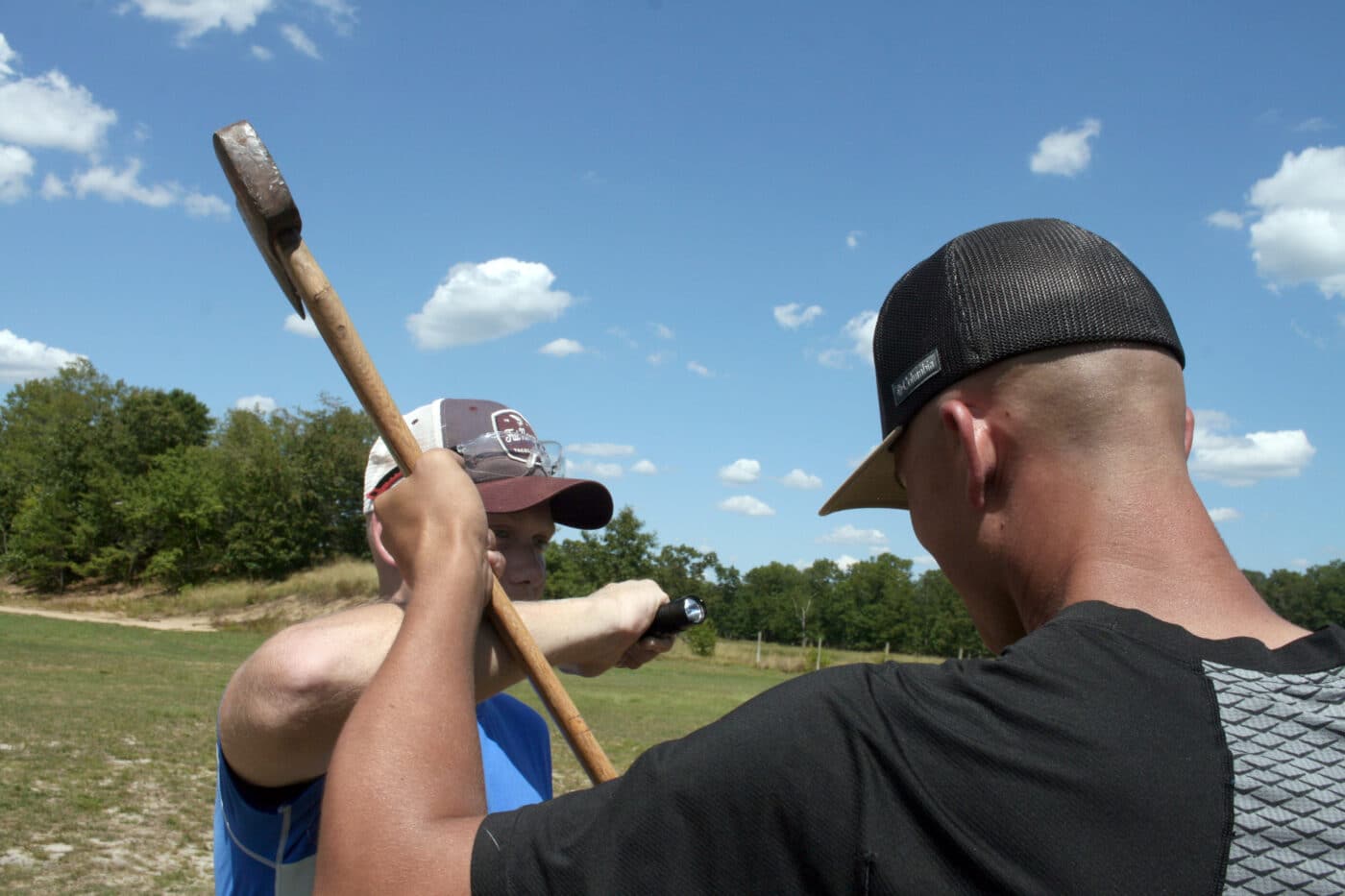
The second category includes the “hands together” techniques where the gun and light are locked together. This may give the user improved stability to shoot accurately at farther distances. On the downside, where the light goes, the gun follows, possibly creating an unsafe situation. In my experience, they are also a bit more complicated and may be difficult for the infrequent shooter to master.
To get an even better handle on this, let’s consider reality. As indicated earlier, a common thread of many armed encounters is the dynamic of close, dark and fast. Do you really think you will have the time to set up that fancy hands-together technique? I would submit that for most scenarios road cops, investigators and armed citizens might find themselves in, a hands-apart technique is the way to go. This supposition has not proved popular with many of my peers, but I feel the hands-apart techniques have much more to offer except in the most unusual circumstance.
Solid Techniques for Close Quarters
The reason I have come to prefer the hands-apart techniques is the fact that they offer much greater flexibility. I can direct the beam of light at a problem area or at someone and not have the gun follow. An example might include a suspicious person that you haven’t necessarily determined to be a threat to your safety. With a hands-together technique, locking the gun and flashlight up in such a threat management situation raises the risk factor to an unreasonable level.
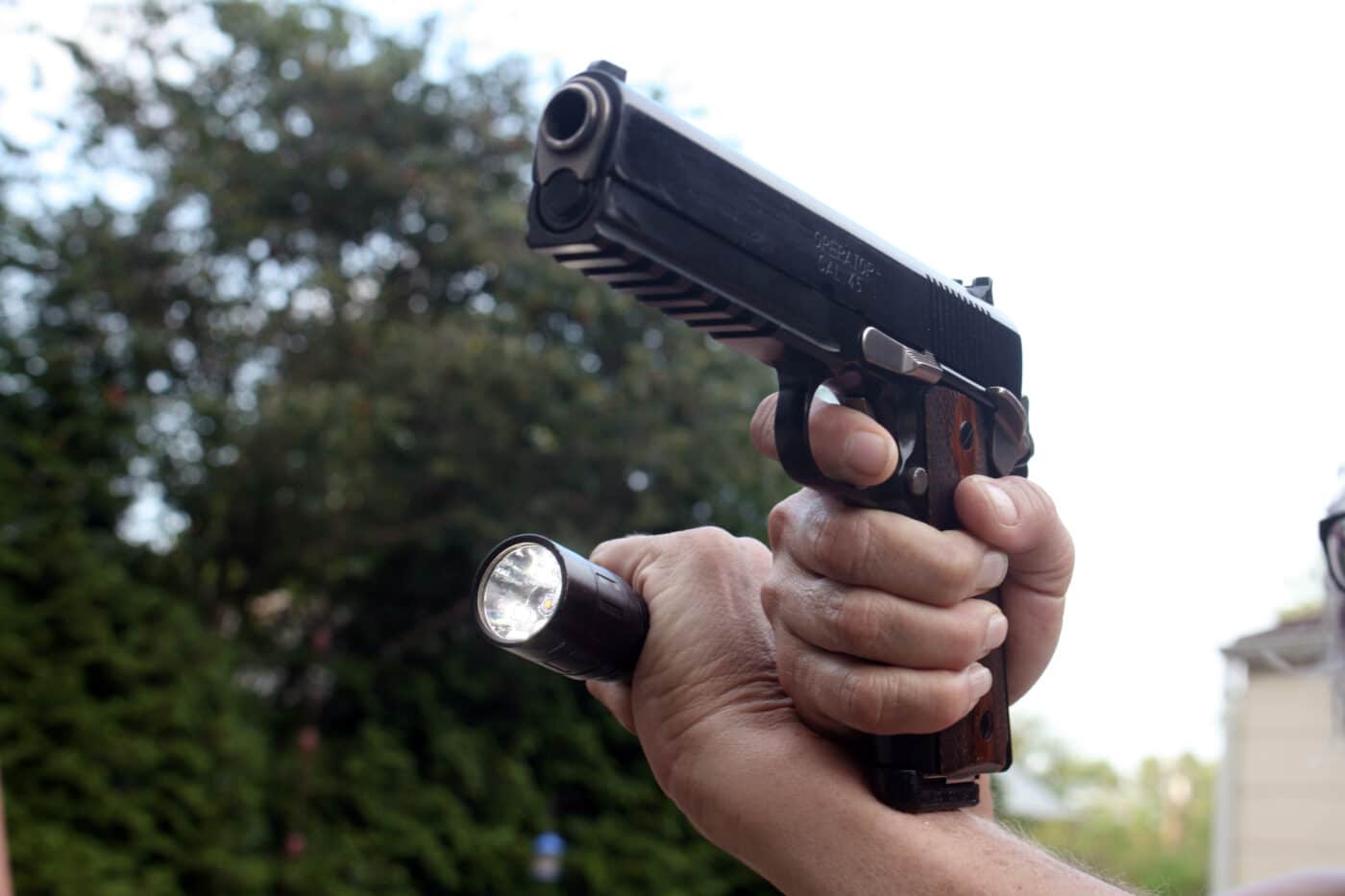
In close quarters, I like the fact I can use my support arm to block an incoming blow or a strike with a contact weapon such as a club. The result may be a broken arm, but it beats taking the same blow to the head and you are still in a sound position to use your firearm. This is not possible with a hands-together technique. Having the hands apart also provides me with the ability to strike an assailant with my light if the situation warrants it.
My preferred close-quarters techniques include the Modified FBI and Neck Index. With the Modified FBI Technique, the flashlight is held in the support hand with the thumb on the tailcap. The support arm can be extended away from the body or held above the head, depending on the situation. It can be easily adapted to the use of cover. One advantage over all other assisted flashlight techniques is that the light is not in front of your body, presenting a homing beacon for an armed aggressor.
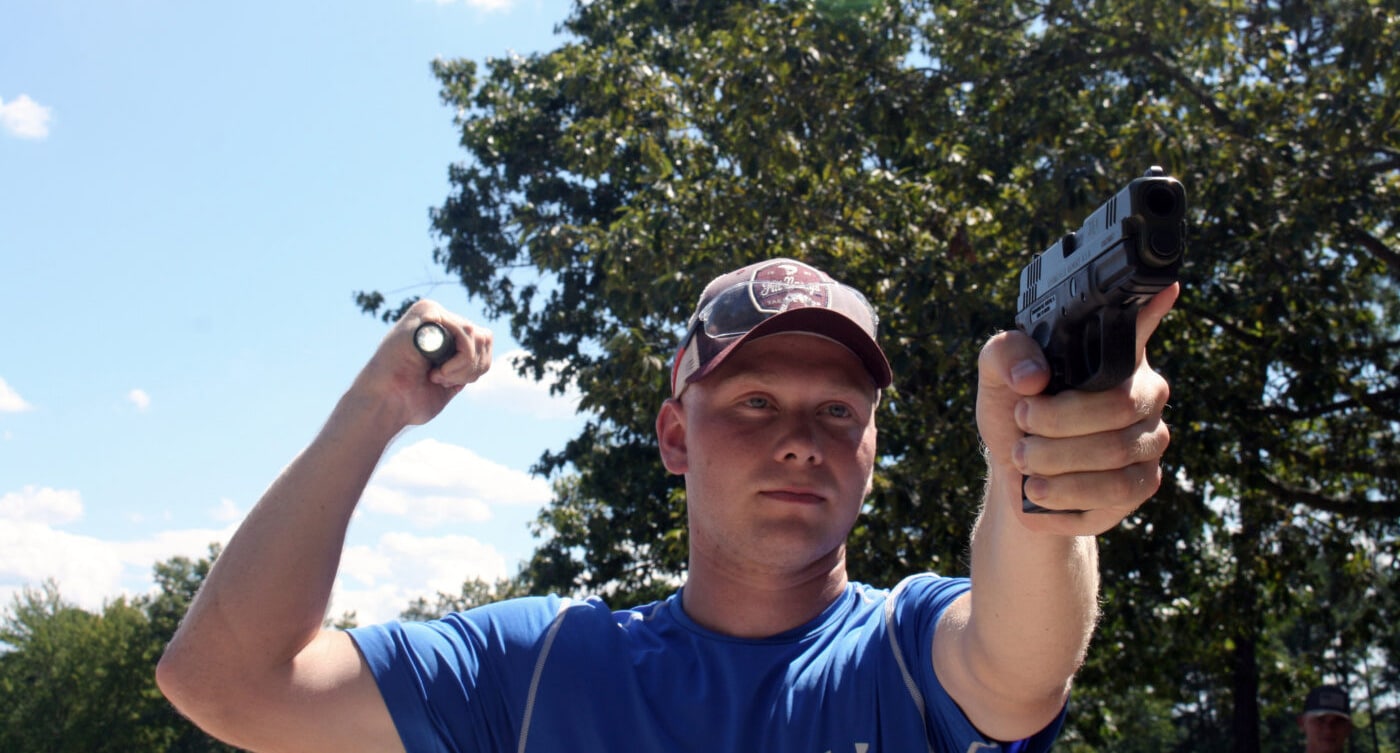
My personal favorite is the Neck Index. The light is held in the support hand the exact same way as the FBI technique. But rather than holding the light at arm’s length, it is indexed on the jawline. The technique is dirt simple, intuitive and well-suited to close-range encounters. Some folks have opined that they are bothered by light reflecting off the gun when using the Neck Index, but the simple solution is to raise the light up to eye level to solve the problem.
With the above techniques, one must be somewhat proficient in one-handed shooting. Considering that many situations unravel at a conversational distance, this shouldn’t be too steep a hill to climb.
Conclusion
Give this all some serious consideration. A little one-hand shooting practice can only help your cause. I recognize that low-light training opportunities for armed citizens are very limited, but even an occasional workout with an empty gun at home is a big plus. Get yourself a quality light and keep it readily accessible. At the first sign of danger, that light should be in your hand. When confronted with deadly danger at spitting distance, simple is always better than complicated.
Editor’s Note: Please be sure to check out The Armory Life Forum, where you can comment about our daily articles, as well as just talk guns and gear. Click the “Go To Forum Thread” link below to jump in and discuss this article and much more!
Join the Discussion
Continue Reading
Did you enjoy this article?

 276
276





